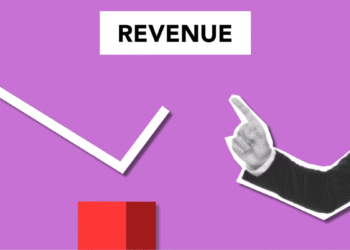Let me just say it: I wasted so much money on ads before I learned to look at the numbers.
I used to launch campaigns with cool graphics and clever copy, then… wait. And hope. That someone, somewhere, would click and buy. Sometimes they did, but more often I was just lighting money on fire and calling it “marketing.”
Everything changed when I started actually using analytics. The data didn’t just tell me what worked, it showed me why. If you’re running ads and not digging into the numbers, here are six tips that will save you money, time, and headaches.
1. Set Clear Goals Before Launching
This sounds obvious, but I swear, most people skip it. I used to run “awareness” ads but secretly hope they’d convert. That’s a recipe for disappointment.
Now I ask:
-
Do I want clicks, sales, or email signups?
-
What’s my target cost per result?
-
How will I measure success?
If you don’t define the goal, you won’t know if your campaign is working, even if the numbers look good.
Pro tip: write your goals down before you build the ad. It’ll keep you focused.
2. Track the Right KPIs for Your Campaign Type
Not all metrics matter equally. In fact, obsessing over the wrong ones can lead you in the wrong direction.
Here’s what I look at:
-
CTR (Click-Through Rate) – Are people even interested?
-
CPC (Cost Per Click) – Am I overpaying for attention?
-
CPA (Cost Per Acquisition) – Am I converting affordably?
-
ROAS (Return on Ad Spend) – Is this actually profitable?
Tools like Google Analytics and Meta Ads Manager make it easy to see this stuff, if you know where to look. Also, UTM links are your best friend. They help track what happens after the click and connect the dots between traffic and conversions.
3. Analyze Audience Behavior and Segments
One of my most profitable tweaks ever? Narrowing my audience by device.
Turns out, mobile users clicked more but converted less, desktop visitors were my buyers. That insight came straight from Google Analytics setup for Payhip.
Look at:
-
Demographics
-
Devices
-
Locations
-
Time of day
You’ll be shocked at how a minor audience shift can change everything. And if you’re not retargeting based on engagement, you’re leaving money on the table.
4. Compare Creatives and Ad Copy Performance
I used to create one ad and hope it worked. Now? I test at least three versions of every campaign.
A/B test:
-
Headlines
-
Images vs. videos
-
Button text
-
Layout style
And don’t just look at surface-level metrics. Sometimes the ad with a lower CTR actually converts better. If you’re new to testing, this A/B testing guide for e-commerce is a great starting point.
Also, track what happens on your landing page, tools like Hotjar or Microsoft Clarity can show you if people are even reading your content before bouncing. Or take it further with heatmaps to see exactly where attention drops off.
5. Monitor and Adjust in Real Time
Don’t wait a week to find out your ad’s flopping. I’ve made that mistake and burned a full week’s budget.
Now I:
-
Set alerts in Google Ads
-
Use rules in Meta to pause ads over a certain CPA
-
Check daily (not hourly, unless you like stress)
If something’s clearly underperforming, pause it. If a winner emerges, scale it slowly — no more than 20% increase per day or it could reset the algorithm learning phase.
6. Use Analytics to Optimize the Full Funnel
Clicks are nice. Conversions are better. But long-term growth? That’s in the full funnel.
Here’s what I track:
-
Bounce rate from ad traffic
-
Scroll depth on landing pages
-
Time on site
-
Email opt-ins and follow-up open rates
-
Sales from retargeting
A good ad might get attention. A good funnel keeps it and turns it into revenue.
Want to go beyond the ad itself? Creating monthly reports for your store helps you understand how ads are impacting your broader sales metrics and where the gaps really are.
Final Thoughts
Look, analytics can feel overwhelming at first. I get it. But once you get the hang of it, it’s like having x-ray vision for your ad strategy.
Start with one campaign. Track your top three KPIs. Test one thing at a time. And don’t just look at numbers, ask what they’re trying to tell you.
When you do that? Your ad game changes. For good.








